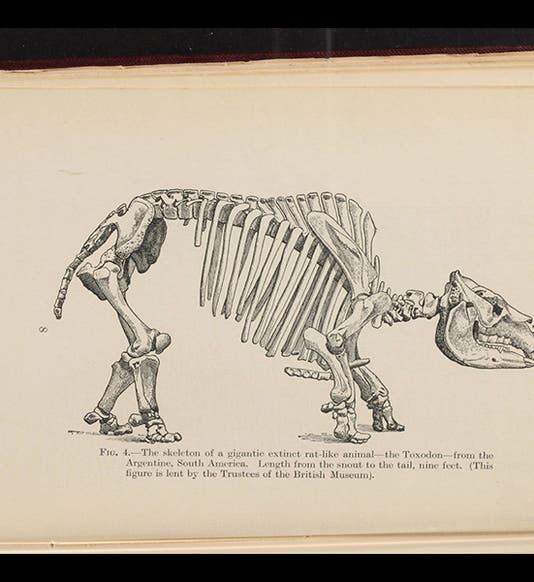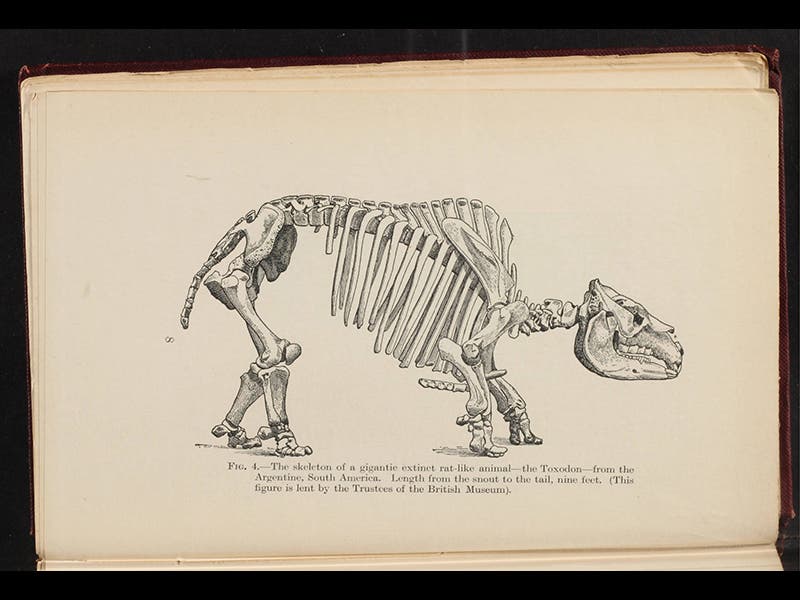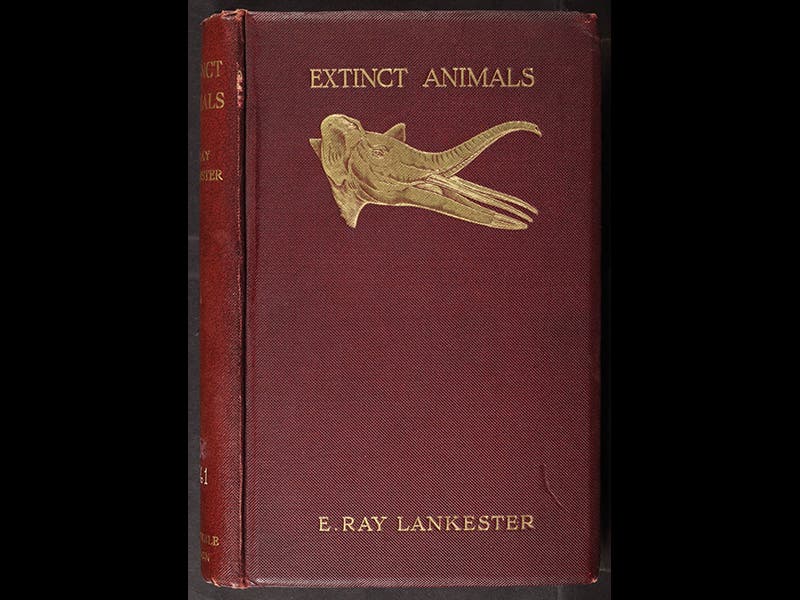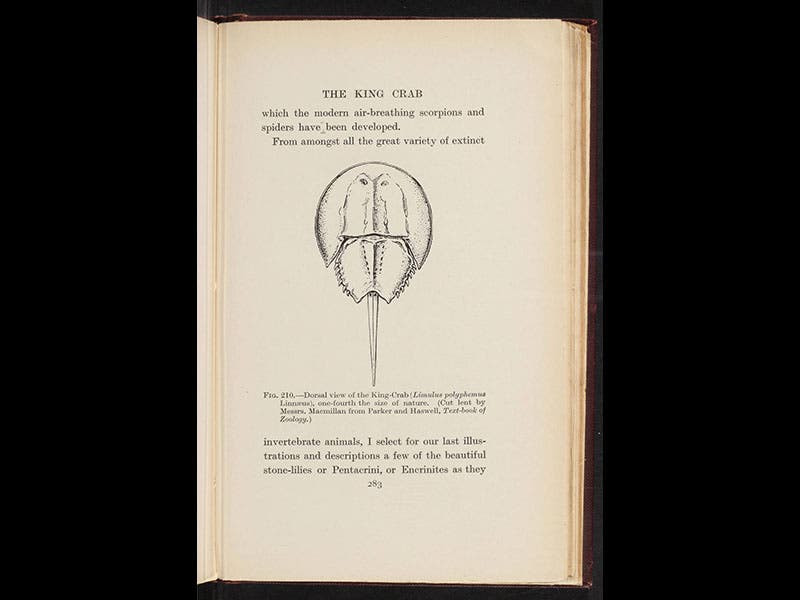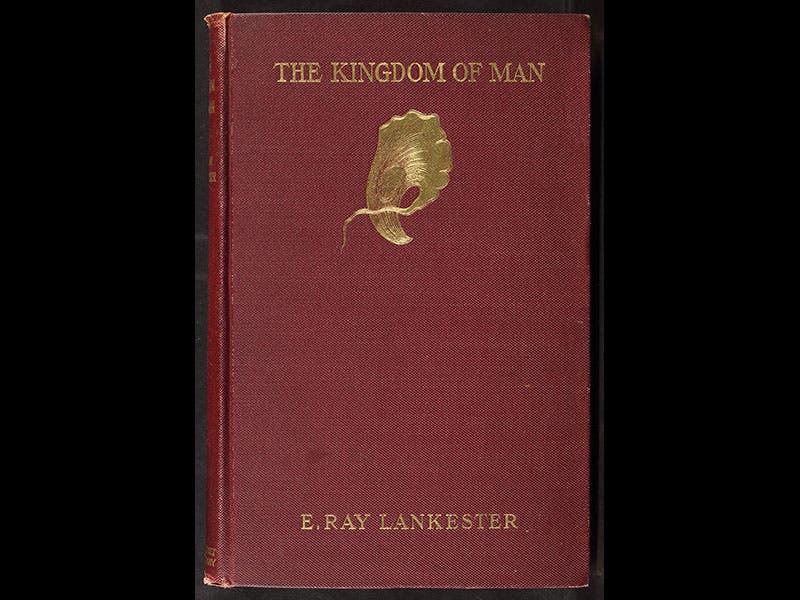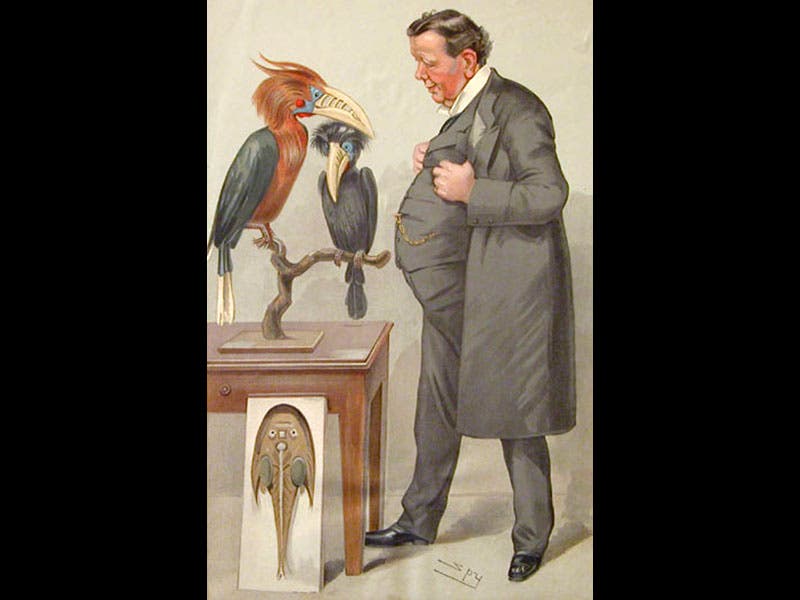Scientist of the Day - E. Ray Lankester
E. Ray Lankester, an English zoologist, was born May 15, 1847. Lankester was a disciple of T.H. Huxley, who was in turn an early defender of Charles Darwin’s theory of evolution, so Darwinian evolution found another ardent apostle in Lankester. He taught at University College, London, and at Oxford, before becoming director of the Natural History Museum in London. Lankester is best known for being the first to realize, in 1881, that the horseshoe crab, Limulus polythemus, is not a crab at all, but more closely related to spiders and scorpions (third image above). He also followed Huxley in his fondness for writing popular science books. We have a number of these in the Library, including Extinct Animals (1905; second image) and The Kingdom of Man (1907; fourth image). Extinct Animals contains a handsome full page wood engraving of a Toxodon (first image), the large extinct mammal that Darwin discovered in South America on the Beagle voyage. One of the more attractive features of turn-of-the-century popular science books are the gold stamps that often adorn the cloth covers; Extinct Animals has a head of an extinct elephant ancestor, Gomphotherium (which Lankester calls a Tetrabeladon), while the Kingdom of Man has, of all things, a trypanosome, a blood parasite that Lankester re-discovered in 1871. Cover images were nearly always taken from text images, and if we rummage around in the Kingdom of Man, we can find the source of the trypanosome on the cover (fifth image) Lankester was also one of the few naturalists (Darwin and Huxley being two others) to have the honor of being caricatured in Vanity Fair, which mostly took aim at earls and dukes and figures of politics. The cartoon above (sixth image) appeared on Jan. 12, 1905, right after Lankester had delivered the Christmas lectures at the Royal Institution, so perhaps that was the occasion for this visual roast. And that in turn probably prompted his becoming Sir Ray in 1907. If Vanity Fair goes after you, you must be worthy of knighthood. Dr. William B. Ashworth, Jr., Consultant for the History of Science, Linda Hall Library and Associate Professor, Department of History, University of Missouri-Kansas City. Comments or corrections are welcome; please direct to ashworthw@umkc.edu.

